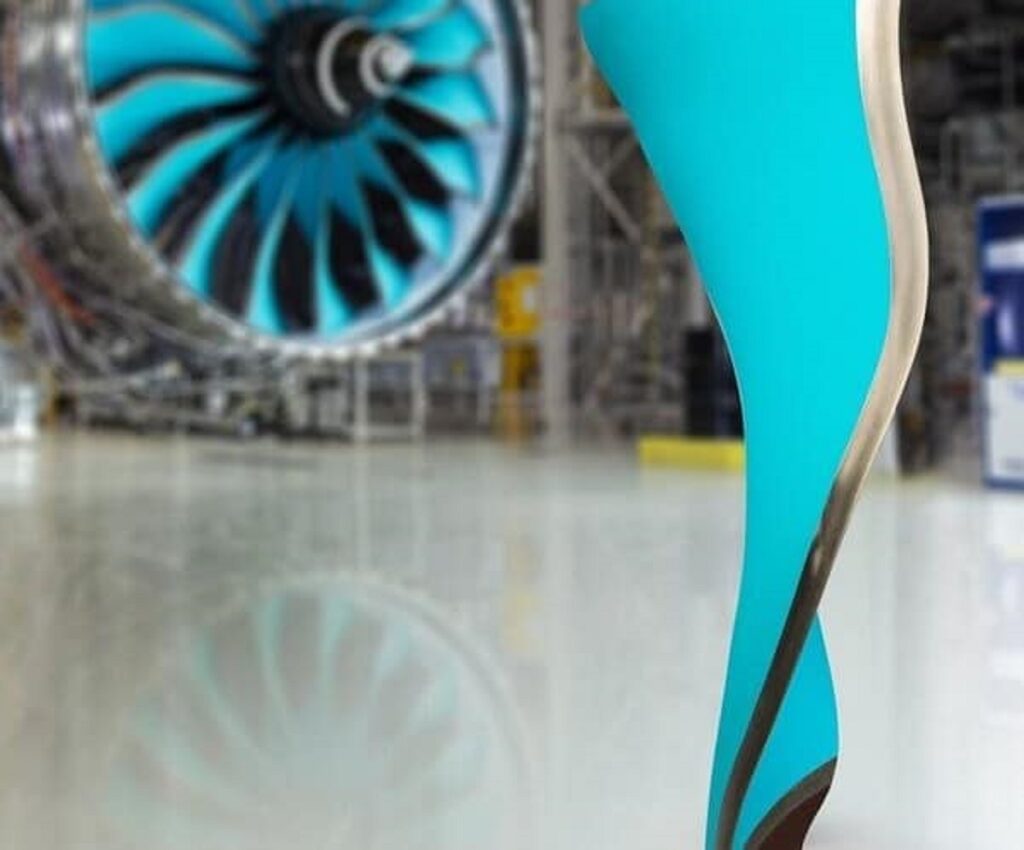
All in an effort to seek more fan efficiency.
Fan blades have gone through a number of evolutionary steps.
Early jet engines use what are called narrow chord fan blades that are typically made of solid titanium. Because they are thin but long (a high aspect ratio), they required “snubbers” (the ring-like circle going through the middle of the fan) to prevent them from vibrating. This had the inherent problem of disrupting airflow over the blades and reducing fuel efficiency.
These were the kind of blades I worked with on The P & W JT9D engines which came with our first Boeing 747s in 1971.

These blades had “snubbers” or “clappers” or “mid-span shrouds” in between them to keep them from flopping around during windmilling.
Around 1980, a new kind of fan blade, the wide-chord fan blade started appearing in the industry, beginning with the Rolls Royce RB211-757E4.
These were also made of titanium, but because of their size, are hollow inside to reduce weight.
Because they have a significantly lower aspect ratio compared to narrow-chord fan blades, they do not require the extra support of snubbers, which significantly increases fuel efficiency.
An added side benefit from wide-chord fan blades is a lower chance of foreign object damage to the core from events such as bird strikes because foreign objects are more likely to enter the bypass duct with wide-chord fan blades.
Towards the end of 1990’s there were two more advancements to fan blade technology. The first was composite fan blades, pioneered by General Electric on the GE90-77B.
The second was swept fan blades, also pioneered by General Electric on the GE90-115B using composite fan blades, and although a later advancement, has been much more widely adopted.
All new engine designs by General Electric, Pratt & Whitney, and Rolls Royce now use swept fan blades, but only General Electric uses composite fan blades.
While US-headquartered General Electric introduced carbon fibre fan blades on the GE90 engine in 1995, and has since used a similar design for the new GEnx-family, its competitor across the Atlantic has held on to a titanium construction until now.
It has thus far not been possible to produce a composite fan blade that is as thin as its metallic counterpart. The thickness of the aerofoil’s cross section determines its aerodynamic efficiency. Titanium has thus far delivered the best balance between weight, drag and durability against vibrations, foreign object damage (FOD) – such as bird strikes – and erosion through sand, volcanic ash and rain. All of Rolls-Royce’s large turbofans since the original RB211-22 have been equipped with hollow, wide-chord titanium fan blades, produced via a super-plastic forming, diffusion bonding (SPF/DB) process.
Composite blades are light[weight] but, in order to have the strength to deal with the real-world requirements, they tend to have been thicker than a normal [metallic] blade, which means they are not as aerodynamically efficient. Rolls-Royce says the titanium fan blades are “lighter and more aerodynamically efficient than those on the [General Electric] GE90.”
Now, however, Rolls-Royce and composite specialist GKN have developed a carbon fibre fan blade demonstrator that is as thin as the titanium aerofoil, and fulfils the other criteria in robustness, manufacturing costs and production volume scalability as well.

The swept blades transition the shock wave away from the tip toward the core.
Author – Krishna Kumar Subramanian





